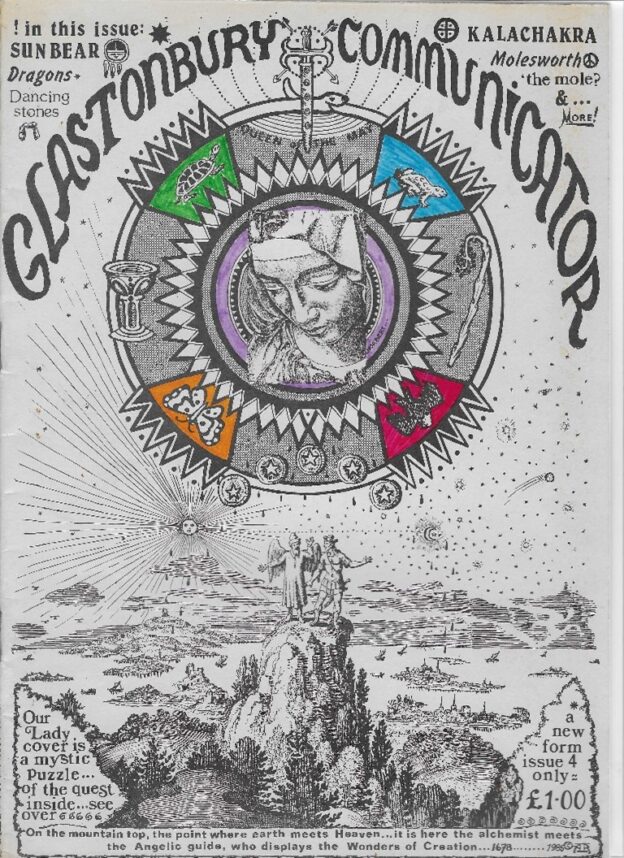When researching a particular topic, place, or time, ephemera – newspapers, magazines, leaflets, posters, and so on – can be a valuable source of information and context. My research is currently focused on the town of Glastonbury and its role in the New Age from the mid-1980s and, as might be expected from a place with an active alternative community, there is a rich history of ephemera from that time.
In the 1970s and 1980s, there were several Glastonbury-based publications reflecting local events and interests. Some only ran for a few issues or even just one, but still gave an insight into the debates and preoccupations of the time. One of the earliest of these was The Torc edited by Patrick Benham which ran for fifteen issues, from 1971 to 1975. The first issue featured articles on psychometry on Glastonbury Tor, and the yin and yang of food, as well as local events, news, recipes, poetry, and for sale adverts. A short-lived title The Glastonbury Thorn, produced two issues; 1979 and 1980, and represented a feminist viewpoint (see Figure 1). It was edited by Kathy Jones, who went on to establish the Goddess community and conference in Glastonbury.
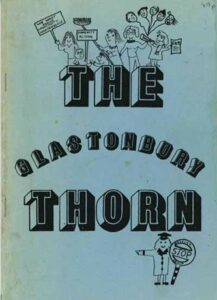
Figure 1. The Glastonbury Thorn
At this point, there was a relatively small alternative community, and few New Age businesses of events, in Glastonbury. The mid-1980s saw a shift in the town. Local manufacturers had closed, and in the recession of the early 1980s chain stores disappeared from the High Street and existing local shops struggled to stay open. However, the town’s proximity to the Glastonbury Festival, and growing reputation as a New Age centre, attracted people involved in Green politics and the festival circuit. The government’s Enterprise Allowance Scheme was set up around this time to help small businesses, requiring only a start-up bank balance of £1000. This created opportunities for New Age businesses and initiatives catering for the increasing number of visitors coming to Glastonbury to experience its spiritual side. Local legend tells of the same £1000 being passed round to several potential entrepreneurs before being returned to its original owner.
The Glastonbury Communicator started as a newsletter about events at the Assembly Rooms, which had been restored and run by the local community as an arts and performance space. It expanded to include other news and events in Glastonbury, and ran for eighteen issues, 1984 to 1988. Local, national, and international news was featured, ranging from concerns about local limestone paving slabs to several articles highlighting the famine in Eritrea.
Unique Publications, which holds an archive of many of the publications mentioned in this article, is a small business started in 1985 by Bruce Garrard. Like several others, he had settled in Glastonbury after being evicted from the peace camp at Molesworth, and was subsidised initially by the previously mentioned Enterprise Allowance Scheme. Unique Publications published The Times of Avalonia (see Figure 2), described by Garrard as a satirical response to the excesses of the local press at a time when New Age travellers, camped at nearby Greenlands Farm in the aftermath of the Battle of the Beanfield, were the target of local outrage. It ran for eleven issues from 1985 to 1988. Its successor, The Glastonbury Gazette (see Figure 3), was an attempt to go more mainstream in its coverage, for example publishing a series of more balanced articles about the travellers. It ran for seven monthly issues in 1989. Renamed the Glastonbury Times, it ran for a further five issues from 1990 to 1991.
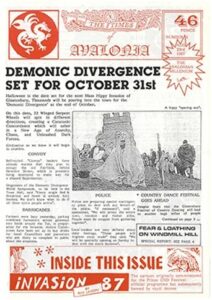
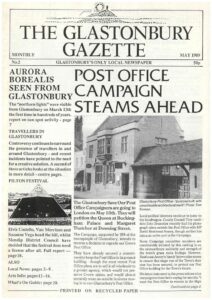
Figure 2. The Times of Avalonia Figure 3. The Glastonbury Gazette
The Glastonbury Gazette had a feature called The Oracle on the back page, which listed events happening in Glastonbury each month (see Figure 4). The Oracle became a separate free monthly listings paper in the early 1990s, and is still published today. Originally just four pages, it now has over forty pages of listings, articles, and adverts, and reflects not only New Age trends over the past few decades, but also the growth of the alternative community and businesses in Glastonbury. Although the transient nature of many businesses in Glastonbury maybe reflects the correspondingly transient nature of some of the local population and their interests, of the six High Street businesses advertised in the June 1992 issue, three (a vegetarian café, a witchcraft shop, and an art gallery) are still trading, and another (a bookshop) only closed recently due to the owners retiring.
The most recent periodical was also from Unique Publications – Free State, which ran for thirteen issues, published quarterly from 1998 to 2001 (see Figure 5). In his book, also entitled Free State, Garrard describes it as a more professional publication both in appearance and content.
These magazines, produced locally by people in the community, often partly hand written and illustrated, provide a wealth of information often not available anywhere else, that was less likely to be covered by or advertised in the mainstream press; Earth Mysteries and Astrology camps, celebrations to mark Earth Day and the Harmonic Convergence, and events such as a five day celebration of Arthur in Avalon at Easter, and a Festival of the Second Coming. They reflect the changing trends in New Age beliefs and practices, as well as the social, political and cultural context, in Glastonbury and beyond, although they are often inconsistently archived, and undervalued as a resource, as I have discovered in the course of my own research. If digital ephemera are similarly disregarded and not preserved, this is a problem that future researchers will continue to face.
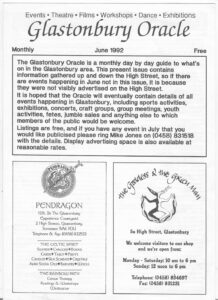
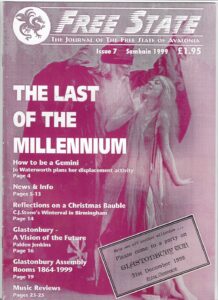
Figure 4. Glastonbury Oracle Figure 5. Free State
More information about publications mentioned in this article can be found in Garrard, B, (2014) Free State 2nd edition, Glastonbury; Unique Publications. and on the Unique Publications website: https://www.unique-publications.co.uk/
The Oracle is still distributed free in Glastonbury, and is online at: https://www.glastonburyoracle.co.uk/

